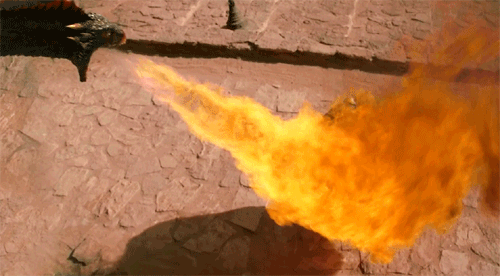dyqik
Well-Known Member
The pic of the glowing red element is still less than 1500˚F. You want white light you need to be a lot hotter.
Brew on
Although brewing with white light may put you at risk of skunking your beer.

The pic of the glowing red element is still less than 1500˚F. You want white light you need to be a lot hotter.
Brew on
Does this also include the feeder wiring?
240v is not what is used for calculation.. The acceptable voltage range is 220v -240v... (110v-120v for 115v)..
So calculations are done using the 'ideal' target voltage of 230v.. That is what the generating plant seeks to deliver to your premises... Load on the system (or lack thereof), voltage loss due to long wire runs, etc. can affect the system voltage, both at delivery point, or at point of use... If you put a meter on your service, and watch it throughout the day, especially in summer months when all your neighbor's A/C is running (or your own), you'll see the voltage delivered to your service vary quite a bit....
The power ratings of heating elements are specified at 240V, not 220V or 230V. For current calculations, you need to use 240V, not 230V, to determine the resistance of the element, and realize that the delivered power is likely less at 230V.
233.5VAC measured with multimeter.
22.01 measured with clamp-on ammeter.
So that's only 5139 Watts of heat from my element.
Right. With incandescent, it's a 10x change in resistance. Pretty impressive. Brewing element shouldn't exceed 212F. Shouldn'tDepends on how you clean your element.
http://www.youtube.com/watch?v=nKG3UjT0Wz4
Love it!
I've heard you mention this method of cleaning before. How long are you powering it dry there? Few seconds?
Does the element flex as it heats in the video. I didn't know they did that. Great video.
Not sure I'd be brave enough to try this. (It's moot now as I don't use electric but one day I will.)
Just a few seconds after it gets red. That's all it takes. Everything turns to ash. Regarding that slight movement of the element when heated, I guess that's the coefficient of expansion of the materials at play there.

The power ratings of heating elements are specified at 240V, not 220V or 230V. For current calculations for the heaters we use in brewing, you need to use 240V, not 230V, to determine the resistance of the element, and realize that the delivered power is likely less at 230V.
There's also a bit of variation within each production run of elements and between production runs.
My kettle element reaches 5450 W at 240V (measured with current/voltage/power meeting I built into my simple SSVR controller). Typically my supply voltage varies between 237V and 242V.
Yes. Every element I've had in my hands is marked as power at 240v. Actual power is derived by actual voltage.
The question is at what voltage does the element actually deliver it's rated power? At any lower voltage, it will deliver lower power, and draw less current. If the element can deliver rated power at less than the maximum possible line voltage, then power at max possible voltage needs to be determined in order to calculate max possible current draw. A possible complicating factor would be if the element had a negative temperature coefficient of resistance. To my understanding, the elements we use have small positive temp coefficients, so we don't have to worry.
Brew on
Either could be used. I don't think there is any benefit to using a breaker for the PID fuse. It might be advantageous to use a breaker for the pump outlet, as it is more likely that the pump could overload without an actual permanent fault condition.
Brew on
Popping in for one last note, his idea absolutely would work, it doesn't matter if the contacts on the controller are NO. He just needs to use a pilot relay with the coil voltage for the contactor going through the NC contacts of his pilot relay. I drew a mock up a few posts back and attached as a PDF.
Ok so I'm pretty shaken up. I knew I was no electrician going into this but I thought I had it wired correctly. I'm fine. Did not receive any shock.
I'm building a very simple electric HLT. I must have wired something wrong b/c when I flipped the switch on my project box, my box jumped from the table and the SSR inside was fried. The 30 amp breaker in the main panel had tripped but the 50 amp GFCI had not. Feel free to tear me a new one. I'm ashamed of myself and pretty flustered.
Here's my wiring diagram
Here's my list of materials.
http://www.lowes.com/pd_591488-427-3032WZ_0__?productId=50179201#img
http://www.amazon.com/gp/product/B0087O6T10/?tag=skimlinks_replacement-20
http://www.lowes.com/pd_423568-43469-2203___?productId=4013827&pl=1&Ntt=30+amp+dryer+outlet
No, but a light bulb is a load and you stated you wouldn't use a switch to power a load. So what you are implying is that at some point of power consumption there is a cutoff where you should not use a switch and instead use a contactor regardless of whether the switch can handle that load or not? Can I ask what this magic number is?
Here's the measurements I made on my system a few years ago. This is with a Camco 5500W element
I would like to know why using a breaker SWITCH is ok but using another properly rated switch isnt? is a breaker not a direct mechanical switch?
Just a few seconds after it gets red. That's all it takes. Everything turns to ash. Regarding that slight movement of the element when heated, I guess that's the coefficient of expansion of the materials at play there.
How often do you do this? Ever caused any problems? Noticed accelerated 'wear'?
Enter your email address to join: